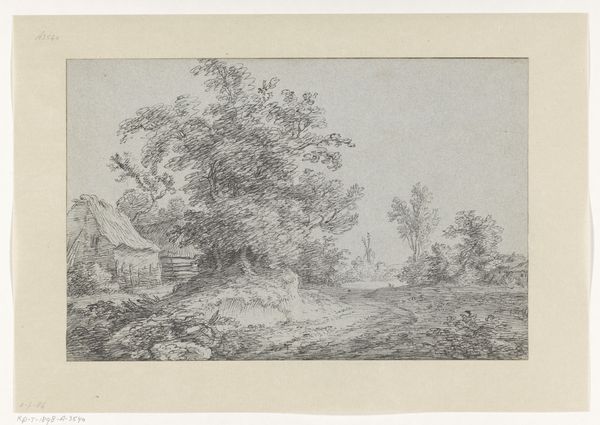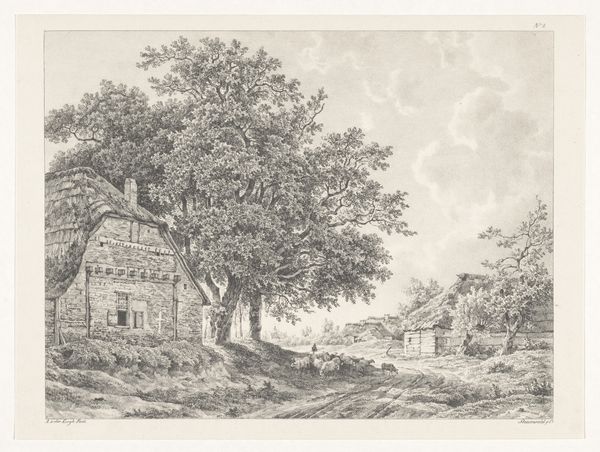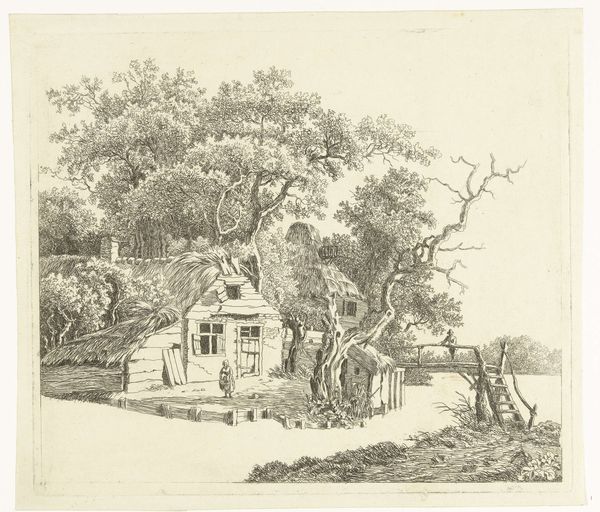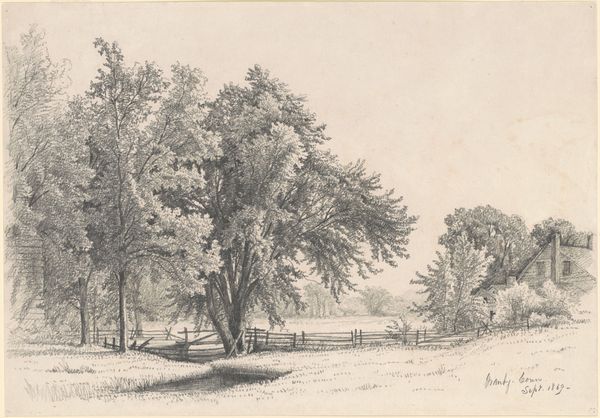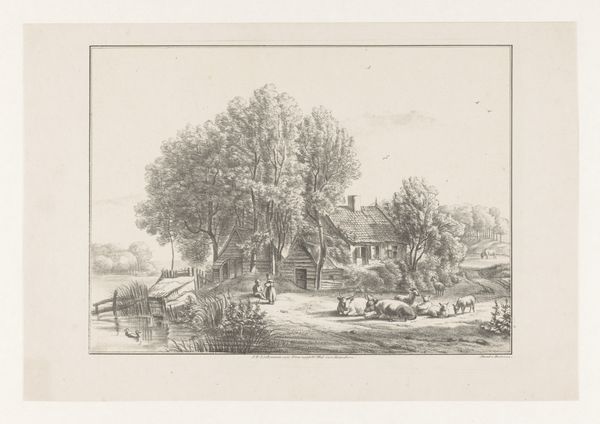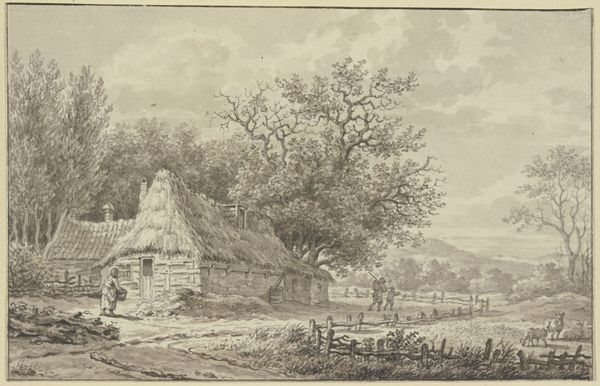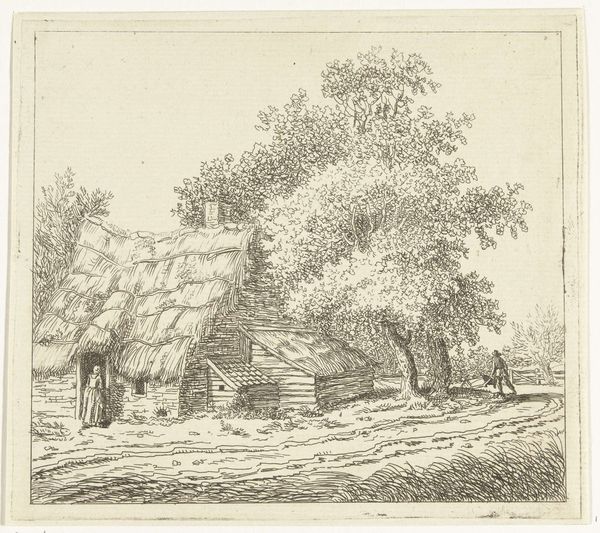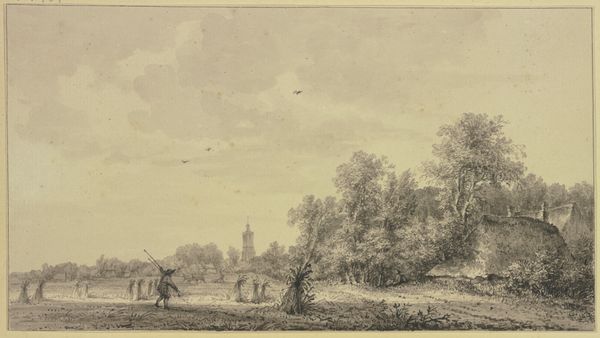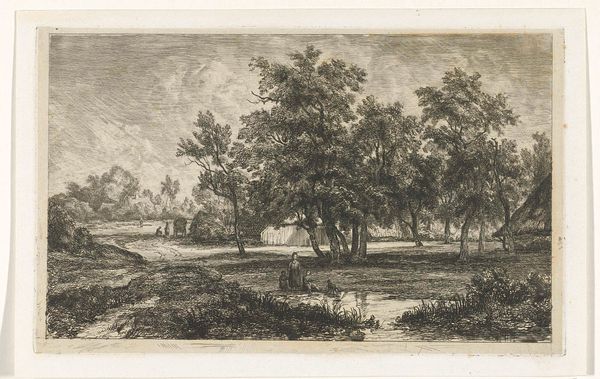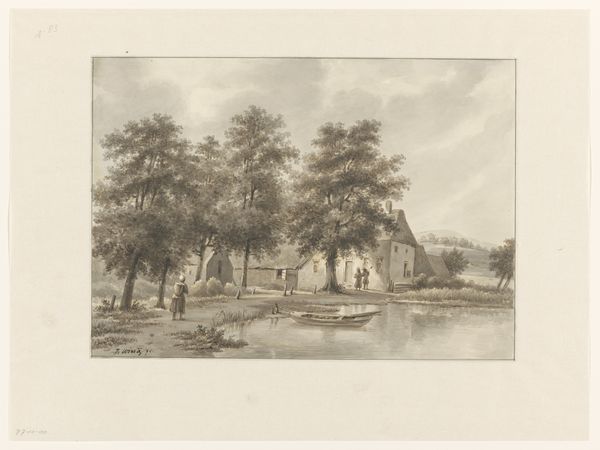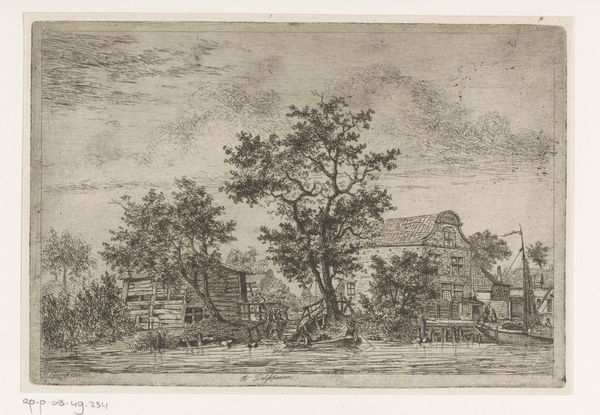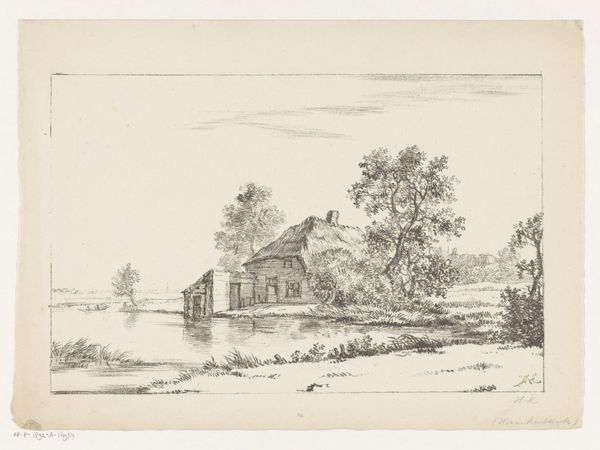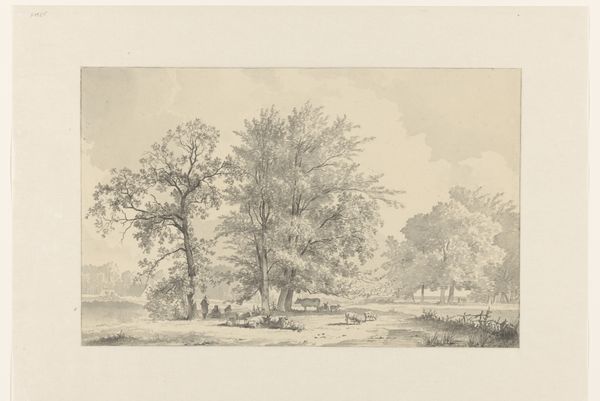
drawing, pencil
#
drawing
#
landscape
#
etching
#
pencil
#
hudson-river-school
#
realism
Dimensions: sheet: 29.85 × 43.5 cm (11 3/4 × 17 1/8 in.)
Copyright: National Gallery of Art: CC0 1.0
Editor: This pencil drawing, "Castleton, Vermont," was created by James Renwick Brevoort in 1871. It has such a tranquil and serene feel. How do you interpret this work? Curator: Well, it presents a classic scene associated with the Hudson River School, a distinctly American artistic movement that helped define the nation's cultural identity in the 19th century. Brevoort uses the picturesque Vermont landscape, but how does this idyllic vision function ideologically, especially during the Reconstruction era? Editor: Reconstruction era? So, there's more to it than just a pretty landscape? Curator: Precisely! The drawing romanticizes rural life, seemingly ignoring the social and political turmoil of the time. By presenting an image of peace and pastoral beauty, Brevoort offers a visual retreat from the complex realities of post-Civil War America. What impact do you think such idealized images might have on the collective consciousness? Editor: I guess it’s easy to overlook the social context, drawn in by the image itself. So, the beauty serves a purpose? To, maybe, gloss over harder truths? Curator: Exactly. Think about how art institutions, then and now, contribute to shaping public memory and understanding. Whose stories get told, and whose get left out? This image, displayed in a gallery, reinforces certain narratives about American identity while silencing others. Editor: This has made me think about how artists might be deliberately responding to particular historical pressures through their work. Curator: Absolutely. Understanding art in its social and political context allows us to critically engage with its messages and the values it promotes. Next time, consider what a picture doesn't show you!
Comments
No comments
Be the first to comment and join the conversation on the ultimate creative platform.
